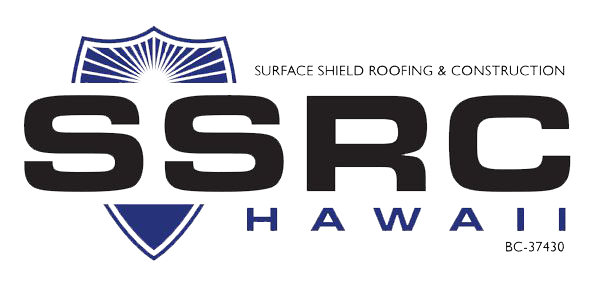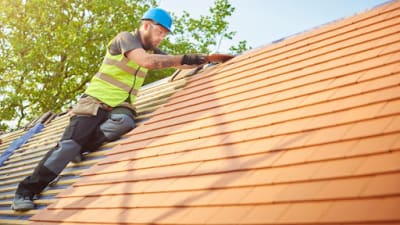Roof Repair Oahu: Expert Roof Repair Works for Lasting Protection
Roof Repair Oahu: Expert Roof Repair Works for Lasting Protection
Blog Article
Comprehending the Different Kinds Of Roofs: A Comprehensive Guide for Homeowners
In the realm of homeownership, choosing the suitable roofing style is a choice that lugs considerable implications for both capability and aesthetic allure. With a range of choices-- varying from the conventional gable to the modern flat-- each kind provides one-of-a-kind advantages and challenges that should straighten with the property owner's environmental factors to consider and particular requirements. Understanding these differences not just help in making an educated selection but likewise influences long-lasting maintenance and power efficiency. As we explore the intricacies of numerous roofing system kinds, it comes to be evident that a person dimension does not fit all; the ideal option may shock you.
Gable Roofings
Gable roofing systems, characterized by their triangular form, are amongst the most preferred roofing designs as a result of their simplicity and effectiveness in shedding water and snow. This design includes 2 sloping sides that satisfy at a ridge, allowing for effective drainage and decreasing the danger of water accumulation. The steep pitch typically connected with saddleback roofs enhances their capability to take care of heavy rainfall, making them appropriate for various environments.
In addition to their sensible advantages, saddleback roofs supply visual flexibility. They can be adjusted to numerous building styles, from traditional to contemporary homes. The layout can additionally suit extra features such as dormer windows, which enhance natural light and ventilation in the attic room space.
In addition, gable roof coverings supply sufficient area for insulation, adding to energy effectiveness. Home owners can select from a range of roof products, consisting of asphalt tiles, metal, and floor tiles, even more enhancing modification alternatives.
Regardless of their advantages, saddleback roofs may require additional support in areas susceptible to high winds or hefty snowfall. On the whole, the saddleback roof stays a preferred choice as a result of its mix of performance, durability, and visual appeal.
Flat Roofs
Flat roofings are frequently acknowledged for their minimalist style and functional applications, particularly in commercial and industrial settings (oahu roofing). These roof coverings feature a straight or virtually straight surface area, which enables very easy building and construction and functional room use. While they may do not have the aesthetic allure of angled roofs, flat roofs supply various advantages, especially in city settings where taking full advantage of area is vital
Among the primary advantages of flat roof coverings is their availability. Property owners can utilize the roofing space for different purposes, such as rooftop yards, terraces, or solar panel installations. Furthermore, level roofs are commonly more economical to keep and mount compared to their sloped counterparts, as they require less products and labor.
Usual products utilized for level roofing systems include built-up roofing (BUR), changed asphalt, and single-ply membrane layers, each offering distinct benefits. Generally, flat roof coverings serve as a adaptable and useful option for many homeowners and organizations alike.
Hip Roofs
Hip roofing systems are identified by their sloped sides that assemble at the top, forming a ridge. This design stands out from gable roofs, as all 4 sides of a hip roofing slope downwards toward the walls, supplying an extra stable framework. The angle of the slopes can vary, permitting convenience in building looks and performance.
One of the key advantages of hip roofing systems is their capability to withstand hefty winds and damaging weather. The sloped surface areas make it possible for far better water drain, reducing the danger of leakages and water damages. Additionally, hip roofing systems provide increased attic space, which can be made use of for storage or also exchanged livable locations.
However, creating a hip roof covering can be more expensive and complicated than less complex roof types, such as saddleback roofs. The additional product and labor included in producing the inclines and ensuring correct structural honesty can lead to higher expenditures. In spite of these drawbacks, many house owners favor hip roofings for their toughness, visual appeal, important site and potential for power effectiveness.
Mansard Roofing Systems
Mansard roofs, usually recognized by their special four-sided layout, feature 2 slopes on each side, with the lower slope being steeper than the top. This building style, stemming from France in the 17th century, is not only cosmetically enticing but practical, as it maximizes the usable room in the upper floorings of a structure. The steep lower slope enables even more clearance, making it an optimal selection for lofts or attic rooms, which can be exchanged living areas.
Mansard roofs are defined by their versatility, fitting numerous architectural designs, from typical to contemporary. They can be constructed with different products, consisting of asphalt roof shingles, slate, or metal, providing property owners with a series of alternatives to match their budgets and preferences. Furthermore, the layout permits the combination of dormer home windows, boosting natural light and air flow in the upper levels.
However, it is crucial to think about the potential disadvantages. Mansard roofings may need even more maintenance because of the intricacy of their layout, and their steep slopes can be testing for snow and rain overflow. On the whole, mansard roofings incorporate sophistication with usefulness, making them a popular choice amongst homeowners seeking unique architectural functions.
Lost Roof Coverings
As home owners significantly look for simplicity and functionality in their architectural layouts, shed roofing systems have actually become a preferred selection. Identified by a single sloping airplane, a shed roofing system presents try this site a minimalist aesthetic that enhances various home styles, from modern to rustic.
One of the key benefits of a shed roof covering is its uncomplicated building and construction, which often converts to lower labor and material expenses. This design permits efficient water drainage, reducing the risk of leaks and water damage. Additionally, the upright incline gives enough area for skylights, boosting natural light within the inside.
Lost roof coverings also provide convenience in regards to use. They can be efficiently incorporated right into additions, garages, or outdoor structures like pavilions and sheds. Moreover, this roofing system style can suit different roof covering products, consisting of steel, asphalt shingles, or even environment-friendly roofing systems, aligning with eco-friendly initiatives.
Nonetheless, it is vital to take into consideration local environment problems, as hefty snow tons might require changes to the roof covering's angle or structure. Overall, shed roofs offer a functional and visually pleasing alternative for property owners looking to make the most of functionality without jeopardizing style.
Verdict


Gable roofings, characterized by their triangular shape, are among the most popular roof covering designs due to their simpleness and efficiency in losing water and snow. oahu roofing. The high pitch generally connected with gable roofings boosts their capacity to deal with heavy rainfall, making them ideal for numerous climates
While they may lack the visual allure of pitched roofings, flat roof coverings use many advantages, specifically in metropolitan atmospheres where making the most of area is important.

Report this page